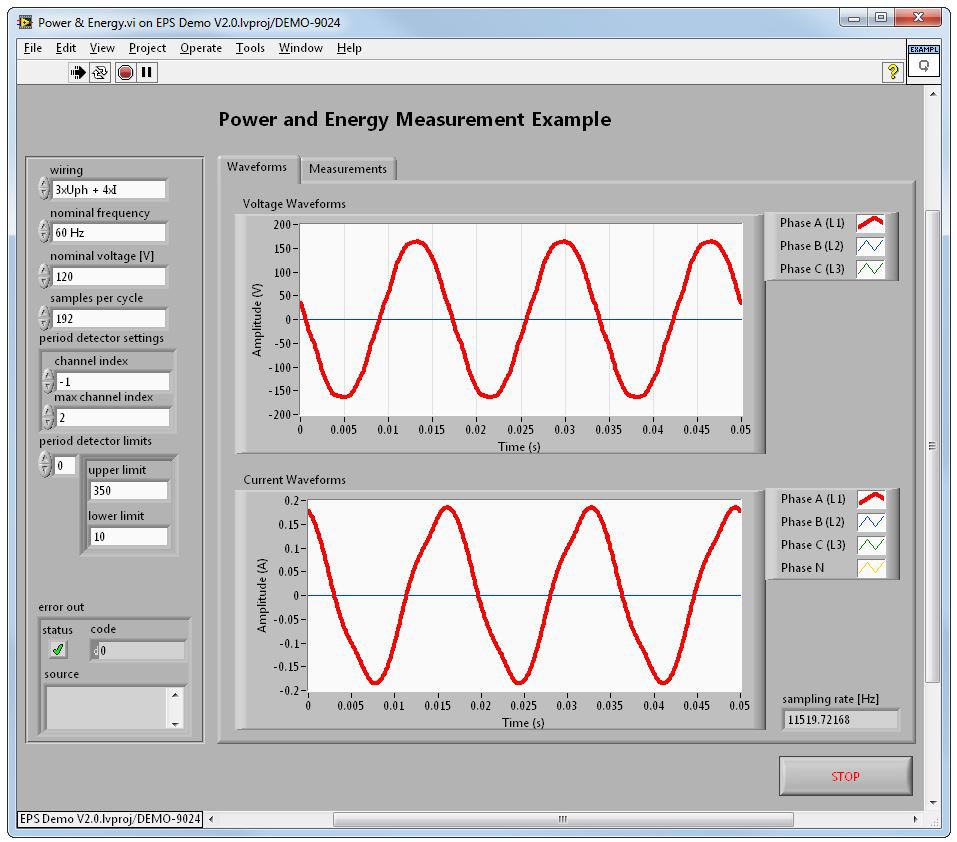Why Choose NI for Power Quality Monitoring and Analysis?
Overview
Contents
- High Quality Data from the Grid
- Upgradability to Hedge Against Future Changes and Needs
- Processing Power for Custom Algorithms and Alarming
- Conclusion
- Additional Resources
High Quality Data from the Grid
The sample rate, resolution, and accuracy of measurement components used are very important but arguably more important is the ability to design them into embedded hardware for measurement systems. NI has 40 years of experience designing board-level hardware for measurement systems which results in high quality I/O hardware, drivers, and support offered today to over 30,000 customers annually.
Many of the measurement modules used for utility applications are based on a 24-bit resolution converter design that samples at up to 50,000 samples/second. (1000/833.33 samples/cyc @ 50/60Hz respectively) Sample rate, resolution, anti-alias filter, and input noise were all considered and designed around high quality waveform measurements.
Quality measurements are only good when domain experts have access to them. Measurement systems built on NI technology have full, programmatic access to raw waveform data. The typical NI based system acquires data, from a PT or CT, at 50,000 samples/sec. This data is often filtered and resampled to convert to a constant number of samples/cycle for power calculations. Typical instruments will report calculated data and maybe some number of waveform points for a record, but NI based systems give full access to everything; the calculation, the resampled waveform data, and the raw unsampled waveform data. It is left up to the domain expert what data is processed, logged, reported, or discarded. This is common in research setups often done in simulation on a PC, but NI technology takes this capability and places it on a ruggedized field deployable system.
Figure 1: Intelligent electronic devices built on NI technology can provide full access to raw waveform data to help with forensic analysis and future detection algorithm development.
Upgradability to Hedge Against Future Changes and Needs
Just as the problems of tomorrow may be different than the problems of today, so to the measurements of tomorrow may be different than the measurements of today. Power quality analyzers and power quality monitors built on NI hardware are freely programmable with a combination of LabVIEW or C/C++ (FPGA is LabVIEW only) and can be re-imaged even after they are deployed. This means that new algorithms can be deployed to help detect new problems without the need for a new capital equipment purchase and install.
The measurement capability of the hardware enables dozens of software-designed features that can be added in the field at a future date such as:
- Harmonic noise, up to the 100+ order, detection
- Fault recording with high speed waveform data (resampled or raw)
- Standard sag/swell/interruption event detection
- Metering
- Flicker detection
- Custom
With the obvious exception of "Custom", LabVIEW function blocks (VIs) exist for all of the above software-designed features in the LabVIEW Electrical Power Toolkit.
Processing Power for Custom Algorithms and Alarming
CompactRIO controllers are available with processors that range from a dual-core ARM9 clocked at 667 MHz/core to a quad-core INTEL processor that runs at 1.91 GHz/core. Additionally, each CompactRIO processor is mated to an FPGA for control and co-processing capability. This processing power is used not only to merge many power quality analysis functions into a single device, but also to help utility experts and researchers run more algorithms in the field to help get information faster. Algorithms are often developed in spreadsheets using volumes of collected data after a fault event and forensic investigations can take months to determine a root cause. With the processing power available in NI technology, portions of algorithms developed in central operations can possibly be pushed down to the grid to help detect problems before they happen and/or shorten the time it takes to identify the root cause of a failure by alerting on data points of the highest value. CompactRIO is an ideal platform for algorithm engineering.
Conclusion
Transmission, distribution, and generation technologies are changing making it more difficult for utilities and vendors to instrument the grid and measure quality impacts. A platform approach with a software focused solution is the best way for intelligent grid devices to keep up with the changes and challenges currently happening on the grid. NI tools, such as CompactRIO and LabVIEW, are built on a platform with design aspects specifically suited for transmission and distribution measurement applications.
Additional Resources
- Learn about power quality analysis and monitoring
- Learn about NI technology use in other utility applications
- Read a white paper on How to Measure Current, Voltage, and Power with NI Technology
- Learn more about the LabVIEW Electrical Power Toolkit
